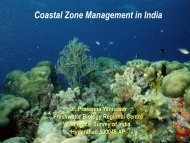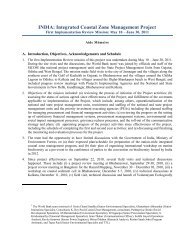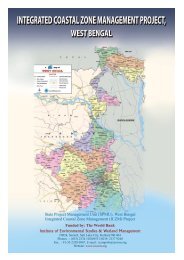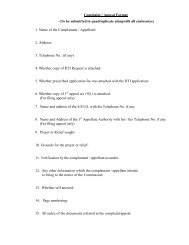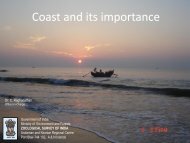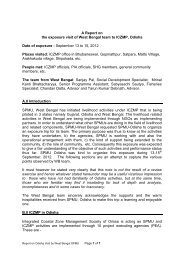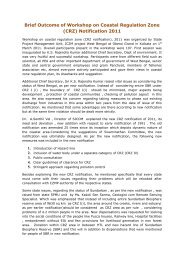Cyclone and Storm Surge - Iczmpwb.org
Cyclone and Storm Surge - Iczmpwb.org
Cyclone and Storm Surge - Iczmpwb.org
You also want an ePaper? Increase the reach of your titles
YUMPU automatically turns print PDFs into web optimized ePapers that Google loves.
2.14<br />
Strong winds known as cyclones occur along the coasts of West Bengal <strong>and</strong> Bangladesh. Most of the<br />
tropical cyclones manifest themselves in April/May or October/November. Wind velocities of 200<br />
km/hour can occur during strong cyclones. The wind velocity reduces rather fast when it blows over<br />
l<strong>and</strong>. This is discussed I n the next section.<br />
When the wind waves reach the coast there are two effects that can cause damage to the shore or to<br />
the embankments built by mankind to protect the l<strong>and</strong>. The first effect is known as wave rush-up. By<br />
the force of the waves water is rushing up the slopes to a higher level than the level of the top of the<br />
waves in open water. The second effect is wave dash. Water is smashed with force against the slope<br />
of the natural or artificial embankment which might cause damage to these slopes <strong>and</strong> eventually the<br />
entire embankment.<br />
2.4.5. Cyclonic storms<br />
The reasons for the development of tropical cyclonic storms are many amongst which the most<br />
important is the prevalence of moist warm winds. Hence they occur mostly during the period front<br />
April to the end of November when South westerly winds blow more or less steadily over the Bay.<br />
Cyclonic storms grow gradually till the maximum intensity is reached. The depth of the lowest<br />
barometric pressure <strong>and</strong> the extent of the wind field are the most important parameters influencing<br />
this intensity. Some stormy extend over a wide area but have only a weak pressure gradient while<br />
others are more concentrated over a small area but have a great pressure gradient. High wind<br />
velocities occur only in, regions of limited extent along the storm track through which the cyclone<br />
passes.<br />
The wind pressure causes an upsurge of the water levels <strong>and</strong> lead to high water levels much higher<br />
than the predicted High Water 1evel based on tidal influence. As such cyclone storms <strong>and</strong> the<br />
resultant surge levels are very important from the hydraulic point of view in as much as they influence<br />
the levels up to which water may rise <strong>and</strong> the levels up to which protection is desired severe cyclones<br />
may cause heavy devastation especially if the storm surge occurs in synchronisation with high tides.<br />
The high waves generated attack the shore <strong>and</strong> embankments at great velocities. The most severe<br />
cyclone within recorded memory occurred in October 1942 when there occurred wide devastation<br />
along the West Bengal coast. The maximum wind speed recorded during this storm was about 165<br />
km per hour in Sagar Isl<strong>and</strong>. The maximum height of water level was about 3.5 meters above the<br />
predicted high water level <strong>and</strong> about 2 Meters above the highest high water level recorded during<br />
other storms. This storm is of course one of an extremely rare occurrence.







